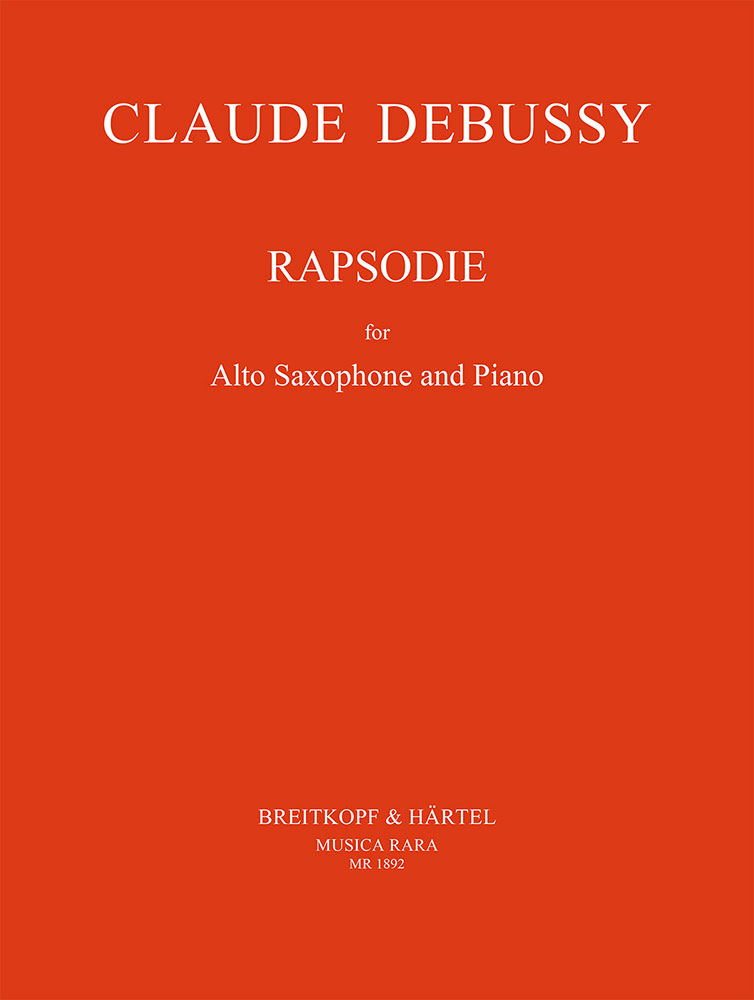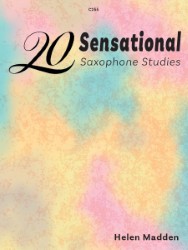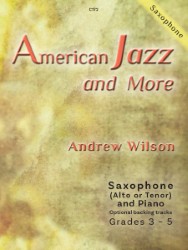Your basket is currently empty!
Rapsodie

Composer: Debussy, Claude
Arranger: Debussy, Claude
Editor: Tyree, Ronald
Arranged for: Alto Saxophone and Piano
Breitkopf and Hartel
| Product Code: | 979-0-004-81841-1 |
| ISMN: | 979-0-004-81841-1 |
| Publishers Number: | MR 1892D |
| Page count: | 22 |
| Condition: | New |
Claude Debussy (1862–1918) was a pioneering French composer whose works significantly shaped the course of modern music. Often associated with Impressionism (though he personally rejected the label) Debussy developed a unique harmonic language that broke away from traditional Western classical structures. His compositions are characterized by fluidity, rich textures, and an innovative approach to tonality, which broke away from the dominant German tradition of the Nineteenth Century.
Early Life and Education: Debussy was born in Saint-Germain-en-Laye, France, into a modest family. His musical talent was evident from an early age, and he entered the Paris Conservatoire at ten years old. Initially trained as a pianist, he gradually shifted his focus to composition, despite resistance from the conservatory’s conservative professors. His early influences included the orchestration used in Russian music, particularly the works of Mussorgsky and Rimsky-Korsakov, as well as the exotic sounds of the Javanese gamelan, which he encountered at the 1889 Paris Exposition.
Musical Style and Innovations: Debussy’s music is often (and accurately) described as atmospheric and evocative.
Debussy used what were, for the time, unconventional scales, such as the whole-tone scale, and ambiguous harmonies. He sought to move away from the rigid structures of German Romanticism, particularly the influence of Wagner, whom he admired but ultimately distanced himself from. His compositions often feature delicate orchestration, subtle shifts in dynamics, motivic variation and an emphasis on achieving colour and mood rather than strict formal harmonic development.
Major Works:
Debussy’s output spans various genres, including orchestral music, piano works, opera, and chamber music. Some of his most celebrated compositions include the following:
Orchestral Works:
Prélude à l’après-midi d’un faune (1894): Inspired by a poem by Stéphane Mallarmé, this symphonic poem is considered a landmark in modern music. Its dreamy, fluid melodies and innovative orchestration set the stage for 20th-century musical developments.
Nocturnes (1897–1899): A set of three orchestral pieces—Nuages, Fêtes, and Sirènes—that explore different moods and textures, showcasing Debussy’s mastery of orchestral color.
La Mer (1905): Often described as “symphonic sketches,” this work captures the movement and essence of the sea through shimmering orchestration and dynamic contrasts.
Piano Works:
Suite Bergamasque (1890–1905): This suite includes Clair de Lune, one of Debussy’s most famous pieces, known for its delicate, impressionistic harmonies.
Préludes (1909–1913): A collection of 24 pieces that explore a wide range of moods and textures, including Des pas sur la neige, La fille aux cheveux de lin, La Cathédrale Engloutie and Feux d’Artifice.
Études (1915): A set of technically demanding pieces that push the boundaries of piano technique and harmonic exploration.
Opera and Vocal Works:
Pelléas et Mélisande (1902): Debussy’s only completed opera, based on Maurice Maeterlinck’s play. It eschews traditional operatic conventions, favouring subtle vocal lines and orchestral textures that enhance the drama.
Mélodies: Debussy composed numerous songs, often setting texts by Symbolist poets such as Paul Verlaine and Charles Baudelaire.
Chamber Music:
Sonata for Flute, Viola, and Harp (1915): A delicate and intimate work that showcases Debussy’s late style, characterized by refined textures and harmonic subtlety.
Cello Sonata (1915): One of his final compositions, demonstrating his continued innovation in chamber music
Debussy’s impact on music was profound. His harmonic innovations paved the way for later composers such as Ravel, Stravinsky, and Messiaen. His rejection of traditional symphonic forms influenced the development of modern orchestration and composition techniques. His works remain central to the classical repertoire, admired for their beauty, complexity, and emotional depth.
Debussy’s music continues to captivate audiences worldwide, offering a glimpse into a world of shimmering harmonies and evocative soundscapes. His legacy endures as one of the most influential composers of the late 19th and early 20th centuries.
R.R.P £16
Our Price £14.00
This Publication will not be fulfilled by The Music Realm.
The Publisher has requested that all purchases of this product be referred to them and they will create a personalised copy of this product and email it to you.
You might also like
-
20 Sensational Saxophone Studies
£5.91 -
3 Suites from Op. 2
£15.00 -
A Good Turn
£8.46 -
American Jazz and More Saxophone
£16.11




